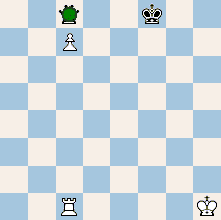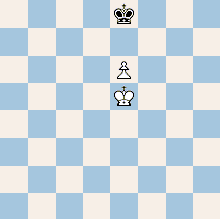
+-

+-
The only difference between “Revised Chess” and regular chess is the additional forward capture-capability of a pawn positioned on the seventh rank. The revised pawn, provided that it has reached the seventh rank, can also capture forwards. Due to this, passed pawns are now more dangerous. In Revised Chess, drawish endgames will occur less often. Many theoretical endgames that have hitherto been drawn are now won. The additional capture-capability will have little impact in the middlegame. It will not affect opening theory at all.
Comparatively, in orthodox chess a pawn is easy to block. This creates the marked drawishness of practical endgames. Therefore, most chessplayers prefer to keep the queen on the board, until they have created an advantage. Players can now exchange queen and enter a practical endgame, and, unlike before, the stronger player will tend to win. This is, arguably, a significant improvement compared with orthodox chess, although much analysis is needed to establish this. Such limited pawn promotion is known from Xiangqi (Chinese chess). When a pawn passes the middle of the board, it gets two additional movement and capture possibilities to the sides.
See also Improved Chess and Reformed Chess.
 Unlike in regular chess, this position is won regardless who makes the first move.
Unlike in regular chess, this position is won regardless who makes the first move.
☛ You can download my free Revised Chess program here (updated 2009-06-02), but you must own the software Zillions of Games to be able to run it (I recommend the download version).
☛ You can play Revised Chess against a human opponent, here.
☛ Don't miss my other chess variants.
© M. Winther June 2009